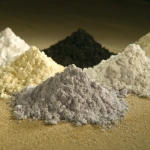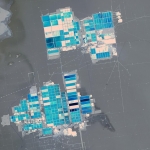USA: Pipeline Leaks Oil on Alaska Tundra
ANCHORAGE, Alaska -- A hole in a pipeline used for transporting by-products at the Kuparuk oil field on Alaska's North Slope has resulted in the biggest spill of industrial material onto the tundra in recent years, the Alaska Department of Environmental Conservation (DEC) said on Tuesday.
The leak, discovered on Sunday night, caused a spill of 92,400 gallons of so-called ''produced water,'' a mixture of salty water and oil, DEC said.
Although there have been bigger spills on the North Slope, ''This is probably the biggest spill to tundra that we've had,'' said Ed Meggert, the Fairbanks-based manager of spill response for DEC.
Although no more than 3 percent of the produced water's volume is oil, and that oil has been stripped of many of its properties, the material is harmful to the tundra nonetheless, Meggert said.
Saltwater, if it seeps into the earth, kills the tundra plants and has lingering effects, he said.
''It's about the same toxicity as diesel,'' he said.
It is suspected that the leak came from a corroded part of the pipe, Meggert said. But the exact cause remains unknown because the breach occurred in section that runs through a culvert, under a road, and investigation will have to wait for completion of some of the cleanup, he said.
Phillips Petroleum, the operator of the Kuparuk field, responded to the spill within minutes of hearing a low- pressure alarm, shutting down the water line, said Dawn Patience, the company's spokeswoman.
''The cleanup started within an hour of the spill,'' she said.
As of Tuesday morning, 92,700 gallons of material had been scooped up, Patience said. That amount is larger than the spilled volume because of the melted ice and snow mixed in, she said.
The spill affected an area that is about 35,000 square feet, or less than an acre, Patience said.
The area will be surrounded with sandbags and containment boom, according to a DEC statement. Some of the produced water reached a small tundra pond and created an oily sheen that is floating on the top, DEC said.
Phillips is working with DEC, the North Slope Borough and Alaska Clean Seas, an industry cleanup cooperative, to come up with a long-term plan for stabilizing the area, she said.
Meggert said the processed water, when it came out of the pipe, was about 100 degrees Fahrenheit. That warmth melted a great deal of snow, a fortunate thing because it diluted the salt content, he said.
''We're hoping it didn't penetrate too far,'' he said.
The general strategy for cleaning saltwater from the tundra is to flush the area with fresh water, he said. The cleanup is expected to last for a few weeks, he said.
The processed water contains salt because the oil producers use sea water to boost oil recovery. Sea water is injected into the earth to build reservoir pressure.
Meggert said there are also plans to scoop up the relatively small amount of oil that has spilled. That oil has been stripped of most of its powerful components during processing, he said. But it, and the saltwater, are still considered dangers to the environment, he said.
''From the state's perspective, it doesn't make any difference. It's all hazardous substances,'' he said.
The Kuparuk field, the nation's second largest, produces about 230,000 barrels of oil a day. BP is the other major leaseholder at the unit.
There have been three other serious spills on the North Slope in recent months, all at BP-operated facilities. But those spills were largely contained on pads, Meggert said.
- 107 Energy



